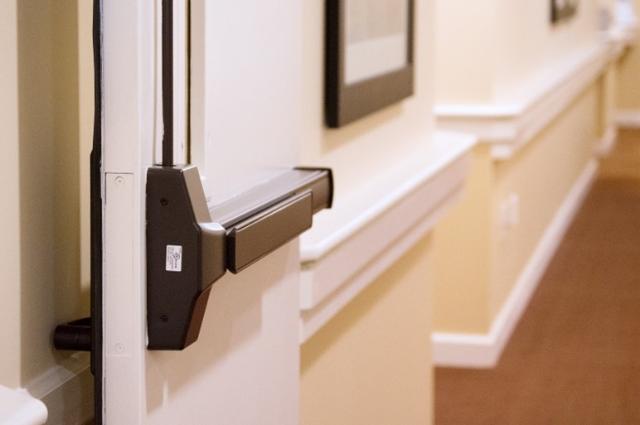
Why is the bottom rod missing?
Have you ever come across a pair of doors that have just a top vertical rod exit device and not top and bottom and wondered why? Often an architect or specification writer will specify “less bottom rod (LBR)” on pairs of doors in healthcare facilities.
Why is the bottom rod missing?This photo was taken in an assisted living facility here in St. Louis. This opening is a pair of corridor doors and are fire-rated, which means they must positively latch in case of a fire to control flames and smoke from traveling through the facility. Without latching hardware on the exit device itself, positive latching is accomplished with the surface mounted top vertical rod. While it isn’t clear from the picture, the door is being held open with a magnetic hold open tied into the fire alarm. If the fire alarm is activated the hold open will release. The door closer will swing the door shut and the top vertical rod will positively latch the door.
This leads us to the question why the architect or specification writer specified LBR. While top and bottom vertical rods help secure the door, the bottom vertical rod is secured to a floor strike mounted in the floor. That floor strike can become a tripping hazard to people that use mobility devices, such as canes, walkers, crutches, and wheelchairs. ADA regulation 404.2.10, Door and Gate Surfaces, states: “Swing door and gate surfaces within 10 inches (255mm) of the finish floor or ground measured vertically shall have a smooth surface on the push side extending the full width of the door or gate.” The regulation goes on to specify how thick protection plates and installation screws can be.
This installation is a textbook example of the intersection of fire code and ADA regulations. The goal of all these codes is to keep people safe – from fire and from tripping. When architects and door hardware manufacturer’s work together, the result can be safe, attractive, and code compliant.





